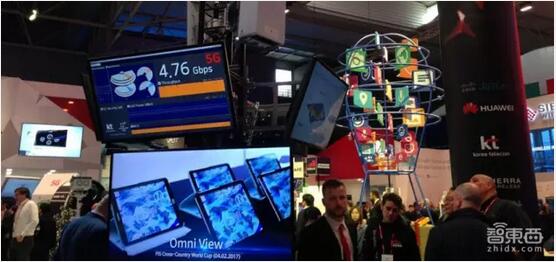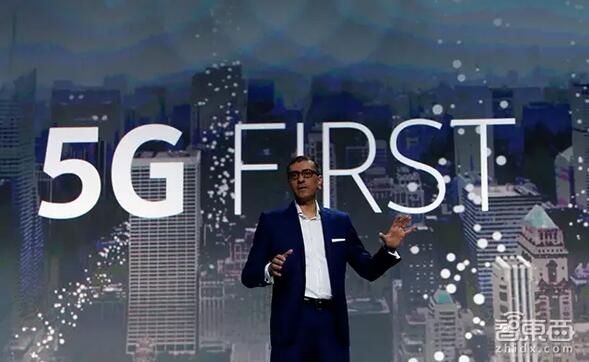2017 is a year worth remembering for the communications industry – everyone finally stopped quarreling about the next generation of communication network standards and began to work hard to bring 5G into reality.
5G has had a craze on this year's MWC. After years of generous commitment by countries and many companies to form committees to discuss standards and build partnerships, the largest event in the communications industry is full of specific product launches, pilot launches, and "the next revolution." The promise of coming soon.
But things are not so simple, 5G's practicality also faces the need for huge investment, competition with 4G networks, and ecosystems from scratch.
1, 5G: huge leap, but practical yet far
Although MWC is keen to discuss 5G, many products and services require 5G (whether for practical or hype), but the reality is that it is still far from practical. The main obstacles are technical difficulties, standards that have not yet been finalized, and business models that are not yet clear. In the future, when it comes to the speed of wireless networks, users should expect "evolution" rather than "revolution."

For example, Nokia CEO Rajeev Suri said in a keynote: "Many people are thinking, 'Why do we need 5G?'' Is it worth billions of dollars?" The answer is yes "But he then tried to control people's expectations: "This will not happen overnight. We believe that most operators will need a gradual process to maximize the value of their current investments."
Why 5G is popular in the industry for the simple reason. When the wireless network is upgraded from 3G to 4G, the highest theoretical downlink speed reaches 100Mbps. This is a huge improvement, but it is insignificant compared to 5G, which has a downlink speed of at least 20 Gbps and can support 1 million devices in a square kilometer.
This rate and connection density are unimaginable today. 5G will allow us to control the robot without delay, allowing autopilots and drones to flood the ground and the sky. Not to mention further development, it is a world where everything is connected.
2, 5G is coming, what about 4G?
Mats Granryd is the Director General of the GSM Association (GSMA), which organizes MWC. He expects to have 1 billion 5G connections by 2025. “Our industry is driving standards, business models and public policy,†he said. “We will let autonomous vehicles react within a few milliseconds. Robots will be able to interact with themselves and the surrounding environment.â€
Still, getting the $1 billion connection will be a long and unpredictable path. One reason is that the issue of communication standards has not yet been fully resolved; another reason is that in more advanced actions, telecommunications companies usually seek a balance that they will adopt only if it is really necessary. More importantly, many telecom companies are still investing in 4G LTE networks.
According to the GSMA data, despite nearly a decade of development, 4G LTE coverage in the world is still only about 34% - which to some extent indicates the time it takes to transition to 5G. In a report released last week, the GSMA predicted that by 2020, 75% of the world's population will be covered by 4G. Currently, about 23% of mobile devices are connected to 4G+, and the industry hopes that this number will increase to over 40% by 2020.

And 2020 is the year when operators really started to deploy 5G. Telecom companies don't want to tear up orders for 4G devices that haven't been delivered yet. Instead, as Nokia CEOs suggest, they want to evolve it into a 4.5G with a 1Gbps rate and then possibly upgrade to 3Gbps.
3, ecological problems: big start, drive the bottom
However, despite such problems, this week's MWC announcement about the 5G announcement shows that the industry is clearly preparing to go further on the next generation of wireless networks.
A new technology that wants to be promoted often relies on the ability to build a new, powerful ecosystem around the technology. In the costly infrastructure project of 5G, the big brothers are determined to take the lead.
The week before MWC, Qualcomm and Intel each announced a 5G modem chip and modem.
Samsung has launched a set of 5G consumer products, including 5G home routers and wireless broadcast equipment. Although they do not give a release time, such a small device will be an important part of the 5G world.
Nokia has released a technology package called "5G First" that targets telecom operators to enable them to start trials as quickly and easily as possible. At the same time, Ericsson also announced cooperation with Qualcomm and Japanese telecommunications company NTT DOCOMO.
"5G will enable operators to provide new application cases in the fields of Internet of Things, automation, big data, etc., and create new revenue sources through new business models." Ericsson's CTO Aihuaxin said, "To accelerate global 5G Commercialization, we continue to work with operators and vendors in the entire ecosystem to achieve a unified development of 5G on a global scale."
Both Verizon and AT&T will begin the 5G pilot this year.
The goal of these releases and tests is to encourage people to start developing applications for 5G networks. In the next decade, the investment in building 5G is expected to reach trillions of dollars. Operators want developers to create richer IoT, HD video and robot-related applications.
This is another reason why telecom companies are cautious about 5G. The last thing they want to do is to spill all the money and build a lot of idle facilities, and then wait a decade until people can make full use of the bandwidth.
Water-cooled capacitor is supercapacitor is a capacitor with a capacity of thousands of farads.According to the principle of capacitor, capacitance depends on the distance between the electrode and electrode surface area, in order to get such a large capacitance, as far as possible to narrow the distance between the super capacitor electrode, electrode surface area increased, therefore, through the theory of electric double layer and porous activated carbon electrode.
Water-Cooled Capacitor,Water-Cooled Power Capacitor,Water-Cooled Electric Heat Capacitor,Water-Cooled Electric Heating Capacitor
YANGZHOU POSITIONING TECH CO., LTD. , https://www.cnfudatech.com
